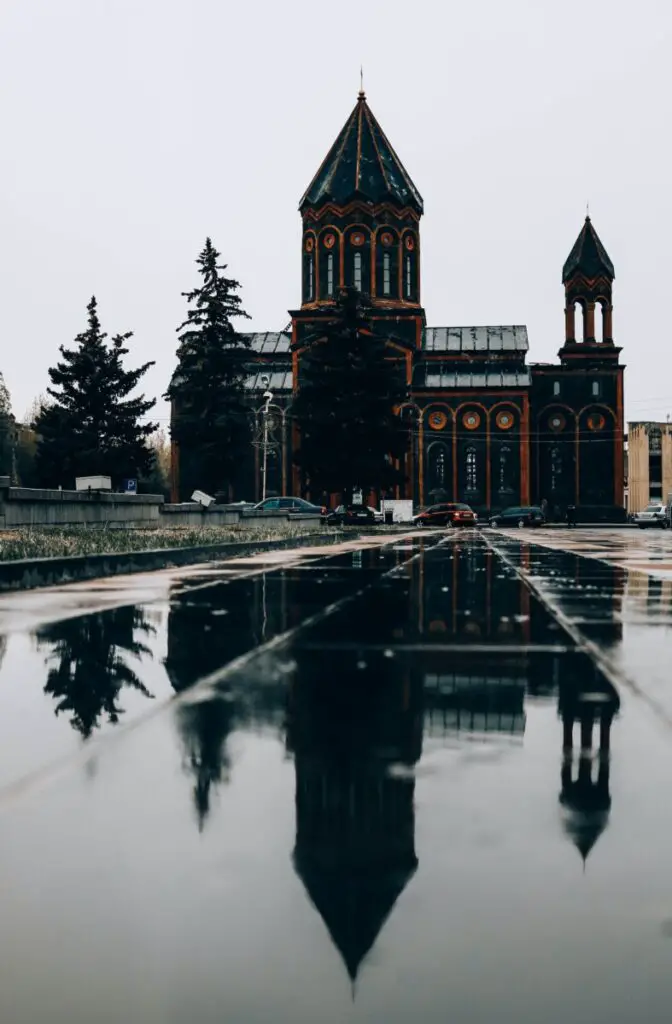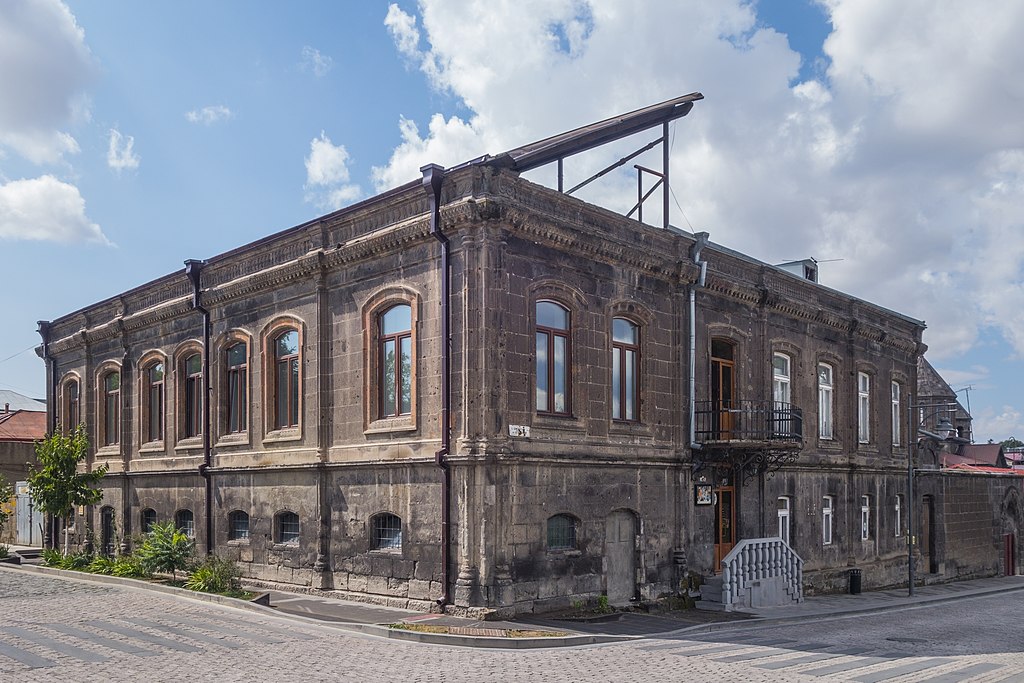9 Top Things to Do in Gyumri, Armenia’s second city
This post may contain affiliate links. If you make a purchase using one of these links, I may receive a small reward at no extra cost to you. See my Disclosure Policy for more information.
Gyumri is the second largest city in Armenia. Even though the devastating 1988 earthquake destroyed much of the city, it still boasts a few magnificent churches and even a whole fortress! There are so many exciting things to do in Gyumri, so don’t skip it while in Armenia!
Gyumri also has a thriving artistic and creative scene. The city is home to many talented artists, musicians, and performers. It hosts various art festivals, exhibitions, and cultural events throughout the year, attracting both local and international visitors.
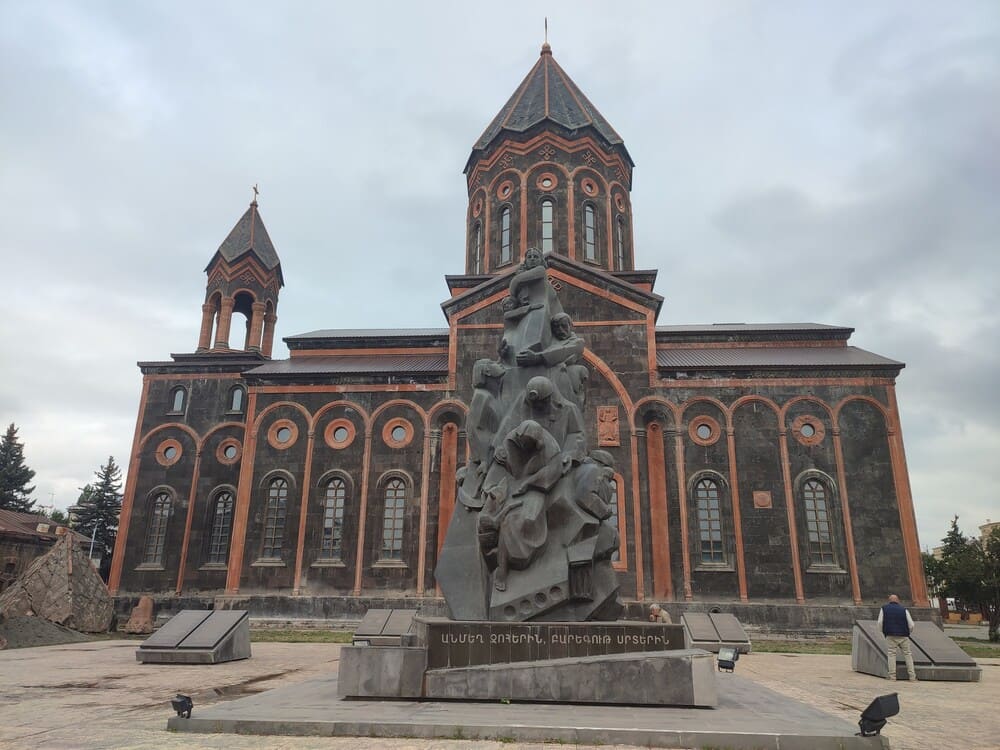
If that’s not reason enough to visit Gyumri, let me just add that it’s also famous for its barbeque khorovats and for its extremely welcoming people. Do you really need more?
So without further ado, here are the top places to visit in Gyumri!
How many days in Gyumri?
Gyumri is not a very big city and you can visit the top attractions within a day or two. You can walk to all places on the list in this article and there’s no need to take any public transport.
Since Gyumri has an impressive cultural scene evident in the sheer number of museums (see point 4), you won’t be able to visit all museums in a day. If you’re a museum aficionado, consider staying at least 2 days.
1. The Black Fortress (Sev Berd)
Built in 1834, this uncharacteristically round, black, stone fortress once protected the city (then part of the Russian Empire) from the Turks and the Persians.

Throughout the years it has been used as weapons storage and a prison, but in a characteristically Gyumri style, it now hosts concerts and other events.
It is on top of a hill overlooking the city on its east side, very close to the towering Mother Armenia. Make sure to get there close to sunset for incredible views and a natural light show!
2. Mother Armenia
Would it really be a Soviet city, if it didn’t have a Mother statue? You can find one in pretty much every big city in the Caucasus, including Yerevan and Tbilisi.
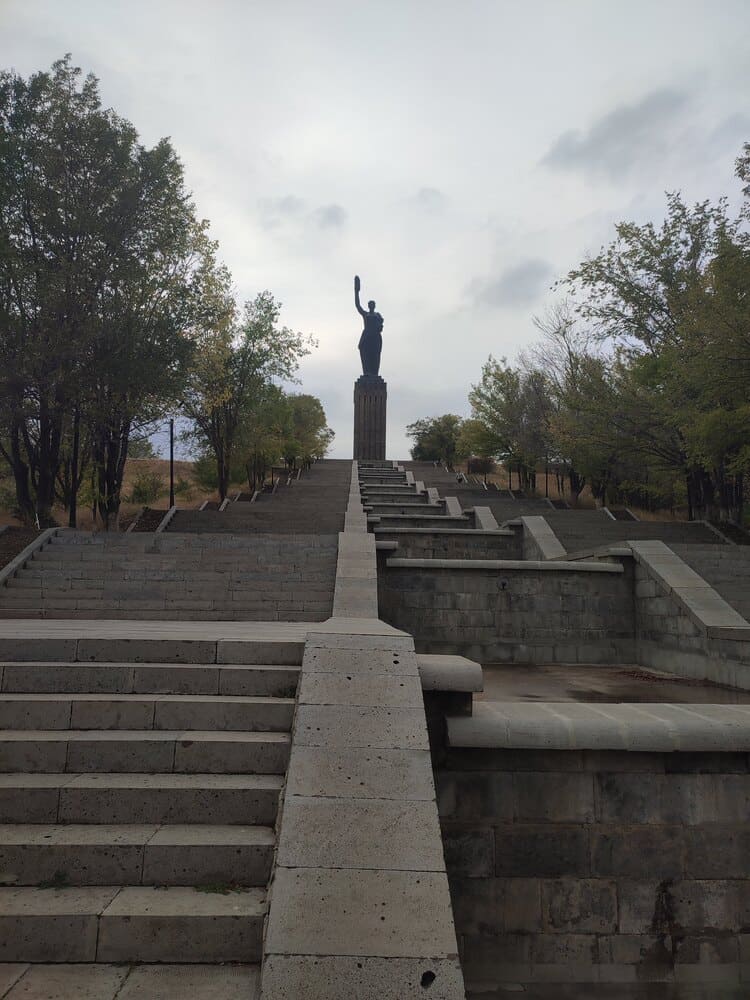
The monument is a symbol of strength and resilience. It commemorates the Armenian women who lost their lives during World War II.
It’s on a hill overlooking the city, right next to the Black Fortress. You can combine the two for a nice afternoon walk.
3. Vartanants Square
Right in the center of Gyumri is the main square. It was first designed in communist style and aptly named May Uprising Square (after the May 1920 uprising that brought communism to Armenia), but slowly got redesigned in the following decades.
It features a statue of Vartan Mamikonian, an Armenian national hero, and is surrounded by beautiful buildings, cafes, and shops.
Around the square are many significant buildings. On the north end is the Cathedral of the Holy Mother of God (also known as Yot Verk) and opposite it, on the south side is another 19th-century church – the Church of the Holy Saviour.
This one is modeled after the Cathedral of Ani, now lying in ruins in Eastern Turkey, just meters away from the Armenian border.
Yup, Armenia is seriously religious.
Gyumri City Hall on the east side is another architectural gem. With its stunning pink facade and ornate design, it is considered one of the most beautiful city halls in Armenia.
The nearby park, Alexandrapol, is a great place to relax and enjoy the surroundings.
4. Soooo many museums
Really though, Gyumri has so many high-quality museums, that you can easily spend all day indoors exploring them.
Some are the conventional museums you’re used to and some are pretty unorthodox in their concept and exhibits.
Here’s a short list of the best museums in Gyumri:
- Dzitoghtsyan Museum of Social Life and National Architecture: Showcases the traditional lifestyle, culture, and architecture of the Shirak region.
- Museum of National Architecture and Urban Life of Gyumri: Focuses on the urban life and architectural heritage of Gyumri.
- Museum of the Aslamazyan Sisters: Dedicated to the prominent Armenian artists, Yevgeniya and Mariam Aslamazyan with insights into their lives, artistic processes, and the cultural context in which they created their works.
- Mher Mkrtchyan Museum: Mkrtchyan is Armenia’s favorite actor! He was born and raised in Gyumri (then Leninakan) and his black tuf house is now a museum dedicated to his life and career.
- Gyumri Historical and Ethnographic Museum: Provides an overview of Gyumri’s history, from ancient times to the present day.
- Gyumri Photography Museum: Focuses on the art of photography with exhibits ranging from vintage cameras, photographs, and various equipment.
- Kumayri Historical Museum-Reserve: Dedicated to preserving the cultural heritage of Gyumri’s Old Town (Kumayri).
- Shiraz House Museum: Houses personal artifacts, manuscripts, and written works of the outstanding Armenian poet Hovannes Shiraz. The house was built in 1886 and is one of the oldest in Gyumri. A fun fact is that it became a museum in 1983 when Shiraz was still alive. The city wanted to show its gratitude to the poet while he was alive. Unfortunately, he died less than a year later. Oh, the irony.
5. The Gyumri Brewery
The brewery was established in 1898 making it the oldest beer factory in the country. It has been a significant contributor to the local economy and has become a popular brand in Armenia.
The brewery produces several beer brands, including its flagship brand “Gyumri Beer.” They also offer different varieties such as Gyumri Premium, Gyumri Light, Gyumri Dark, and Gyumri Wheat.
The Gyumri Brewery provides tours and tastings if you are interested in learning about the beer production process and experiencing its products firsthand. During these tours, you get to see the brewery facilities, see the brewing equipment, and sample different beers.
6. Sample the local dishes
The street vendors at Rijkov Street offer all the Armenian snacks and meals: from soups to desserts. My favorite is yaghli – the Armenian equivalent of the donut.
You should also try the local baklava, the sahar lokum, and the traditional Armenian cookies.
If you fancy a local market, the Gyumri Shuka is open daily from 9 AM to 6 PM. There you can find fresh fruits and veggies, cheese, as well as cured meat known as “basturma“.
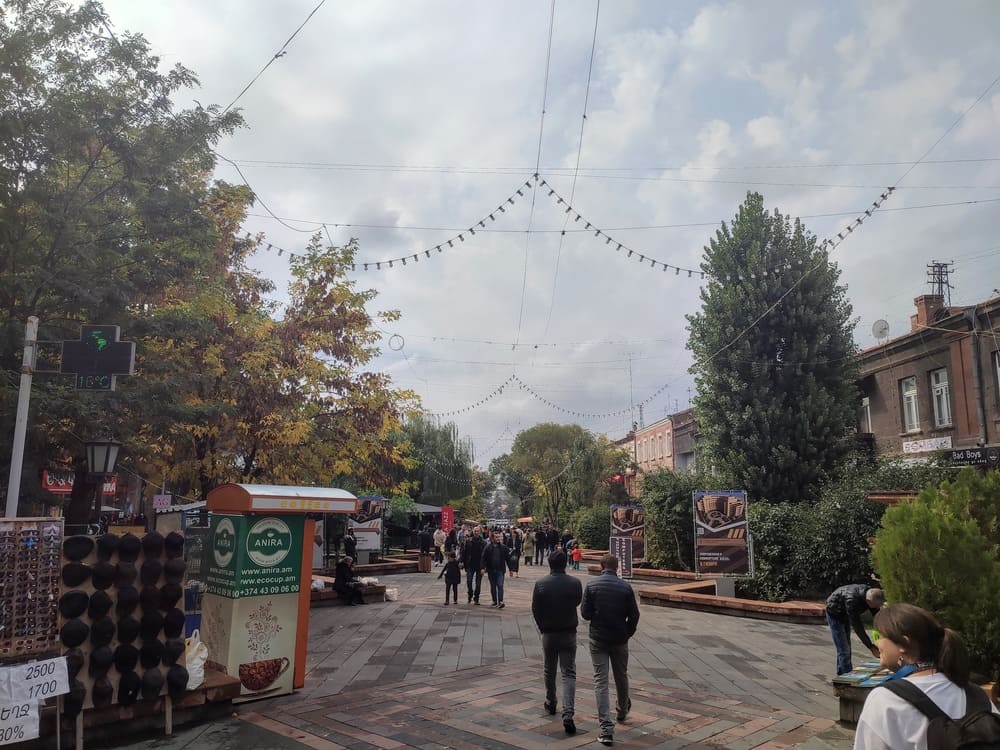
7. Kumayri Historic District
Today the city is Gyumri, but before the fall of the Soviet Union, it was Leninakan. That name was given to it in 1924 as a tribute to, who else but Vladimir Lenin.
From 1840 to 1924 the city was called Alexandropol in honor of Tsar Nicholas I’s wife, Empress Alexandra Feodorovna.
Are you following? Before 1840, the city was known as Kumayri, from the Turkish word “kum“, meaning sand. That’s why the Old Town nowadays retains that name.
Hosting some 2000 buildings, the Kumayri Historic District is a collection of well-preserved 19th-century buildings, reflecting the city’s past as an important center of trade and craftsmanship.
Walk around the narrow cobblestone streets and notice the stone buildings with ornate facades, decorative balconies, and traditional Armenian design elements.
I recommend you take a walk down Abovyan Street. It underwent a major reconstruction after the earthquake of 1988, and then again in recent years, to create a more pedestrian-friendly environment.

It is now a vibrant pedestrian zone, lined with shops, cafes, restaurants, and boutiques, making it a popular spot to stroll, shop, and dine.
8. Soviet Monuments
Spread all around the city are countless remnants of the USSR period.
An ode to the proletariat struggle or a reminder that the collective efforts of the workers will bring prosperity to the nation, the Soviet monuments are sometimes ugly, sometimes weird, and sometimes awe-inspiring.
They are literally everywhere – just look around! A good starting point is the city’s Central Park, just 500 meters from Vartanats Square.
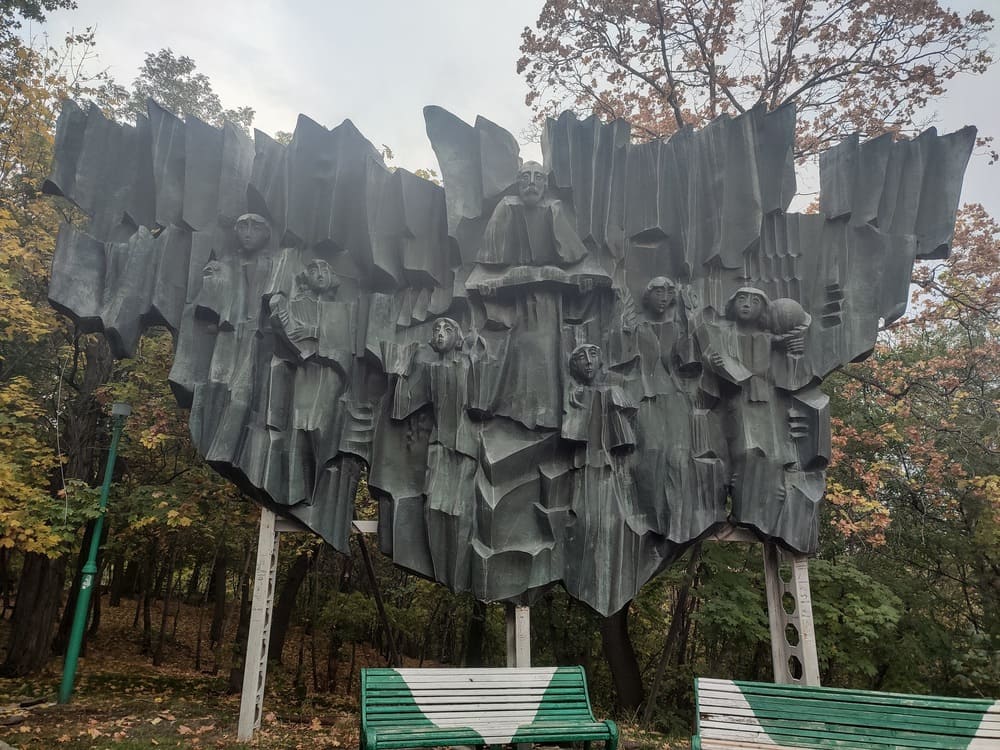
9. Anecdotes Wall
Gyumri is known as the humor capital of Armenia. Its citizens (also known as Gyumretsis) are known for their wit, sarcasm, and comedic storytelling.
Gyumretsis are known for their quick wit and ability to find humor in everyday situations. They have a distinct style of storytelling called “jokhat” which involves humorous anecdotes and jokes.
These stories are often characterized by their satirical nature, social commentary, and clever wordplay. Sometimes a little bit of misogyny, but don’t get too offended – it’s just a joke.
You should check out the Anecdotes Wall on the south side of Vartanats Square.
A woman says to her husband:
A Gyumri anecdote
– Dear, I came into your life from a fairy tale!
– From which fairy tale?
– A nice one
-Did they kick you out?
Where to next?
If you haven’t been to Yerevan, go and see why they call it The Pink City.
While there, you can do short day trips to Geghard Monastery and to Khor Virap (the cradle of Armenian Christianity).
If you’re going further north though, perhaps my free thing to do in Tbilisi, Georgia will be of use.




